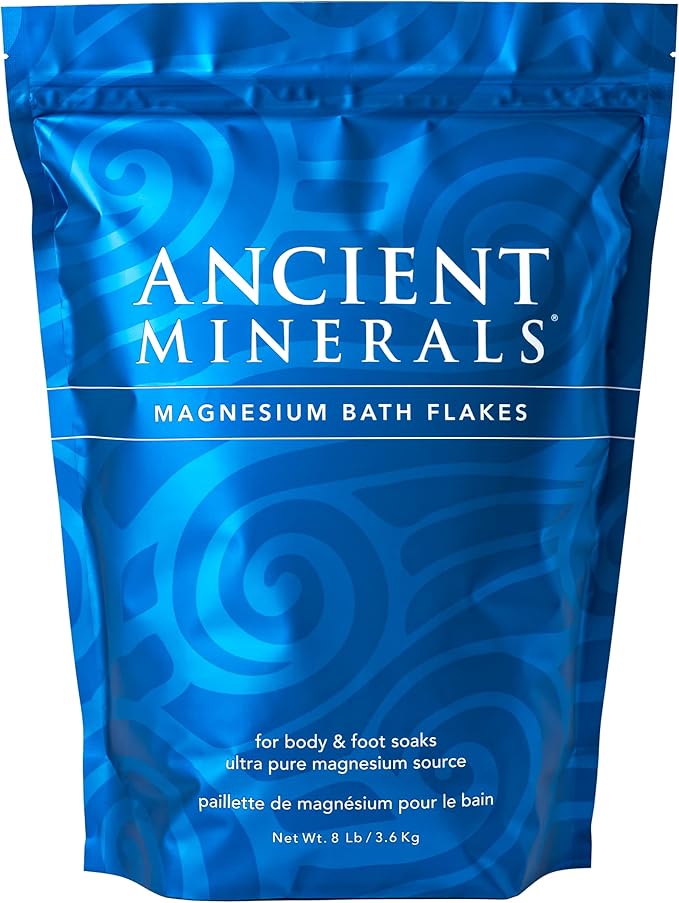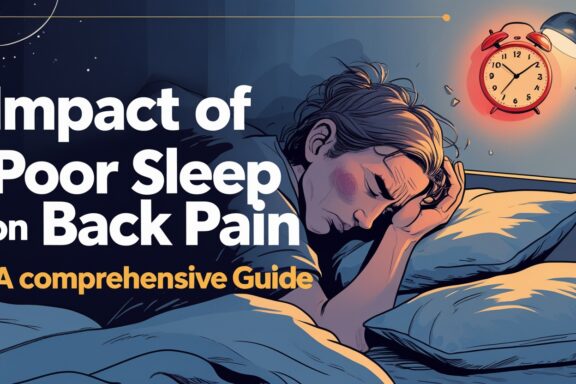Lower back pain—ugh! It's that nagging companion that follows millions of Americans around like a persistent shadow. Whether you're dealing with chronic discomfort or acute pain from overdoing it at the gym, there's something wonderfully therapeutic about sinking into a warm bath infused with Epsom salts. But here's the kicker: this isn't just about relaxation. We're talking serious pain relief backed by science, tradition, and countless success stories from folks who've found their sanctuary in these mineral-rich waters.
Hold on though—before you dismiss this as just another “home remedy” that sounds too good to be true, let's dive deep into the fascinating world of magnesium sulfate (that's Epsom salt's fancy scientific name) and discover why healthcare professionals are increasingly recommending this affordable, accessible treatment option.
What Exactly Are Epsom Salts, Anyway?
Named after the town of Epwell in Surrey, England (where they were first discovered in natural springs), Epsom salts aren't your typical table salt. Nope! These crystalline wonders are composed of magnesium sulfate heptahydrate—a mouthful, right? But here's what makes them special: when dissolved in warm water, they break down into magnesium and sulfate ions.
Now, magnesium is absolutely crucial for muscle and nerve function. According to the National Institutes of Health, this mighty mineral plays a role in over 300 enzymatic reactions in our bodies. When you're soaking in an Epsom salt bath, your skin acts like a sponge, potentially absorbing these beneficial minerals. While the scientific jury is still deliberating on exactly how much magnesium gets absorbed transdermally, countless individuals swear by the relief they experience.
The Science Behind Epsom Salt Baths for Lower Back Pain Relief
Let's get nerdy for a moment, shall we? The magic happens through several mechanisms that work together like a well-orchestrated symphony. First up: muscle relaxation. Magnesium acts as a natural calcium channel blocker, which essentially means it helps muscles chill out and stop cramping.
But wait, there's more! The warm water itself increases blood circulation to the affected area. Improved circulation means better oxygen delivery and faster removal of metabolic waste products that can contribute to pain and inflammation. It's like giving your lower back a gentle, internal massage from the inside out. Plus, the buoyancy effect of water reduces the gravitational stress on your spine—giving those overworked muscles a much-needed break.
How to Prepare the Perfect Epsom Salt Bath for Maximum Relief
Okay, so you're convinced—but how do you actually do this right? First things first: water temperature matters big time. You want it warm enough to promote muscle relaxation (around 92-100°F), but not so hot that you turn into a human lobster. Too hot can actually increase inflammation, which is counterproductive.
Here's your step-by-step game plan:
- Fill your tub with warm (not scalding) water
- Add 1-2 cups of Epsom salt while the water is running to help it dissolve completely
- Stir gently with your hand to ensure even distribution
- Test the temperature before getting in
- Soak for 12-15 minutes initially, working up to 20 minutes max
Pro tip: Don't overdo it on your first few attempts. Start with shorter soaks and see how your body responds. Some people experience mild dehydration or dizziness if they stay in too long, especially when dealing with pain medications or certain health conditions.
The Optimal Soaking Routine: Timing and Frequency
Here's where things get interesting—and slightly controversial. While some sources suggest daily Epsom salt baths are A-okay, others recommend limiting sessions to 2-3 times per week. Why the discrepancy? Well, everyone's skin sensitivity and overall health status differs.
For acute lower back pain (think: you tweaked something moving furniture last weekend), you might benefit from daily soaks for the first few days, then tapering off as symptoms improve. Chronic pain sufferers often find success with a consistent 3-times-per-week routine. Listen to your body, though—it's smarter than you think!
Additional Benefits Beyond Pain Relief
Surprise! Epsom salt baths aren't just one-trick ponies. While we're focusing on lower back pain relief, these therapeutic soaks offer a treasure trove of additional benefits. Stress reduction tops the list—and here's why that matters for pain management: chronic pain and stress feed off each other like unwelcome dance partners.
Moreover, improved sleep quality often follows these relaxing rituals. Better sleep equals better pain tolerance and faster healing. It's a beautiful cycle! Many users also report softer skin (magnesium helps with hydration) and reduced muscle soreness throughout their entire body. Talk about bang for your buck!
Safety Considerations and Who Should Avoid This Treatment
Hold your horses! Before you rush off to fill that tub, let's talk safety. While Epsom salt baths are generally considered safe for most people, there are some important exceptions and precautions to consider.
Individuals with kidney disease, diabetes, or heart conditions should definitely consult their healthcare provider first. Why? Magnesium absorption can affect certain medications and medical conditions. Pregnant women should also get the green light from their obstetrician, although many docs give the thumbs up for moderate use.
Additionally, if you have open wounds, severe skin conditions, or are currently experiencing a fever, skip the soak until you're feeling better. And hey—if you start feeling dizzy, nauseous, or experience any unusual symptoms during or after your bath, get out immediately and consider checking with a healthcare professional.
Enhancing Your Epsom Salt Bath Experience
Want to level up your therapeutic soak? Let's talk add-ins and techniques that can amplify the benefits. Essential oils like lavender or eucalyptus can provide aromatherapy benefits, but use them sparingly—a few drops go a long way, and some people have sensitivities.
Gentle stretching while in the tub can also be incredibly beneficial. Try some simple spinal twists or knee-to-chest movements. The warm water and magnesium work together to make your muscles more pliable and receptive to gentle movement. Just remember: we're talking gentle here, not trying to become a pretzel!
Consider timing your baths strategically too. Evening soaks can help prepare your body for restorative sleep, while morning baths might help loosen up stiff muscles before starting your day. Experiment and see what works best for your schedule and pain patterns.
Comparing Epsom Salts to Other Natural Pain Relief Methods
How does this stack up against other natural approaches? Well, compared to topical pain relief creams, Epsom salt baths treat a larger area simultaneously and provide the added benefits of heat therapy and relaxation. Unlike oral pain medications, there's virtually no risk of dependency or significant side effects for most people.
That said, it's not necessarily an either-or situation. Many people find that combining Epsom salt baths with other approaches—like gentle yoga, proper ergonomics, or massage therapy—creates a more comprehensive pain management strategy. It's like building a toolkit rather than relying on just one tool.
Real Success Stories and What to Expect
Sarah, a 34-year-old teacher, started incorporating Epsom salt baths into her routine after developing chronic lower back pain from long hours of standing. “Within a week of regular soaks, I noticed my morning stiffness was significantly reduced,” she shares. “It's not a miracle cure, but it's become an essential part of my self-care routine.”
Realistic expectations are crucial here. You might notice some immediate relaxation and mild pain relief after your first bath, but the cumulative benefits typically develop over several weeks of consistent use. Some people experience dramatic improvements, while others notice more subtle changes. The key is consistency and patience.
Cost-Effectiveness and Accessibility
Let's talk dollars and cents—because healthcare costs can be overwhelming! A typical bag of Epsom salts costs under $5 and provides enough material for numerous therapeutic baths. Compare that to massage therapy sessions ($60-120 each) or prescription medications, and you're looking at incredible value.
Plus, it's accessible. You don't need appointments, insurance approval, or even leaving your house. Got a bathtub and access to a pharmacy or grocery store? You're all set. This democratization of pain relief is particularly important for people with limited healthcare access or those managing chronic conditions on tight budgets.
Frequently Asked Questions
Q: How long should I soak in an Epsom salt bath for lower back pain relief? A: Start with 12-15 minutes and gradually work up to 20 minutes maximum. Longer soaks can lead to dehydration or skin irritation.
Q: Can I use Epsom salt baths if I'm taking pain medications? A: Generally yes, but consult your healthcare provider first, especially if you're taking muscle relaxants or blood pressure medications.
Q: How often should I take Epsom salt baths for chronic lower back pain? A: Most experts recommend 2-3 times per week for chronic conditions, though daily use for short periods during acute flare-ups may be beneficial.
Q: Are there any side effects I should watch for? A: Mild dizziness, skin dryness, or dehydration are possible. If you experience nausea, severe dizziness, or skin irritation, discontinue use and consult a healthcare professional.
Q: Can children use Epsom salt baths for back pain? A: While generally safe for children over 6, always consult a pediatrician first and use smaller amounts of salt (½ cup or less).
Final Thoughts and Recommendations
As we wrap up this deep dive into the world of Epsom salt baths for lower back pain relief, it's clear that this time-tested remedy offers genuine therapeutic potential. While it's not a magic bullet that will cure all your back troubles overnight, the combination of magnesium absorption, heat therapy, and stress reduction creates a powerful trio for pain management.
The beauty of this approach lies in its simplicity and accessibility. In a world where healthcare solutions often come with hefty price tags and potential side effects, Epsom salt baths offer a gentle, affordable alternative that most people can safely try at home. Whether you're dealing with acute pain from a weekend warrior mishap or managing chronic discomfort, incorporating these therapeutic soaks into your routine could be the missing piece of your pain management puzzle.
Remember though—while Epsom salt baths can be incredibly beneficial, they work best as part of a comprehensive approach to back health. Combine them with proper posture, regular gentle exercise, stress management, and professional medical care when needed. Your back (and your overall well-being) will thank you for taking such a holistic approach to healing and self-care.







